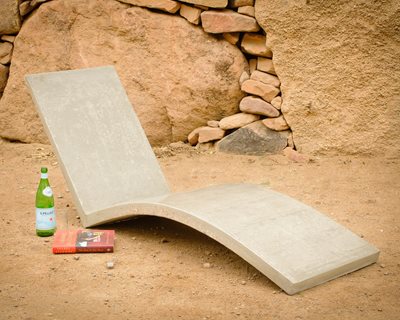As this whole thing is just concept at this point, I'm not sure of where I want to use the concrete yet. Originally I just wanted to do a concrete gantry. I'm now thinking that may still be best. I do want the machine to be movable and don't want to be tied to the floor with anything more than bolts. That being said, I'm looking at tried and true designs of larger industrial routers. The biggest difference in design that I see are not only beefier parts, but how the gantry uprights are made. Most companies seem to use cast iron. My machine has cast iron. It seems as though they all seem to make an extremely rigid structure at this point. That is where the concrete part came to mind. I couldn't use cast iron, but i could make a perfect mdf mold for not just the Gantry uprights, but the bridge as well as a solid unit. I understand that concrete has great compression strength and poor tensile strength. That is why we use rebar. With some of the new fortified reinforced concrete mixes, combined with more conventional reinforcements, I am under the impression that a relatively small structure such as a router gantry could be poured with much success seeing as though there are people using this method to create some abstract pieces of outdoor furniture which are not only relatively thin, but have extremely high tensile strength. I did concrete form work for some time and understand the dynamics of standard concrete pours, but It seems that there are smaller scale methods which may be able to be applied here like this that take a different line of thought.
I am now leaning towards a conventional steel frame with only the gantry being concrete may be the best combination. I do like the concept of using self leveling epoxy and may be able to incorporate that into truing thing up.
Thanks, Jay
Thread: Concrete body for cnc router
Results 1 to 20 of 28
Threaded View
-
06-14-2012, 05:41 PM #9
 Registered
Registered
- Join Date
- Feb 2007
- Posts
- 25
Similar Threads
-
Concrete base idea for mid sized router/mill
By metalworkz in forum DIY CNC Router Table MachinesReplies: 119Last Post: 12-26-2016, 02:39 AM -
Surface body, Solid body
By CAD123 in forum Community Club HouseReplies: 0Last Post: 09-11-2013, 02:00 AM -
Foam Concrete /CLC Cellular Light Weight Concrete Light Weight Bricks/Blocks Machines
By sourceinfratech in forum News AnnouncementsReplies: 0Last Post: 11-28-2012, 06:39 PM -
Cutting a Strat body on a Larken 2424 router
By Larken in forum Musical Instrument Design and ConstructionReplies: 1Last Post: 01-07-2011, 09:46 PM -
Using Concrete in a Router Frame
By azsigns in forum DIY CNC Router Table MachinesReplies: 15Last Post: 11-17-2010, 03:39 PM










 Reply With Quote
Reply With Quote

